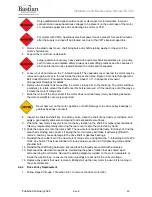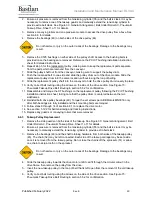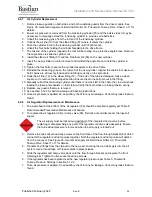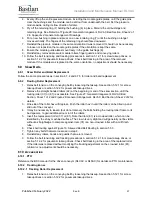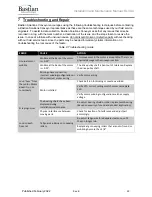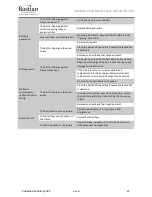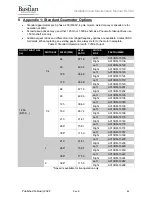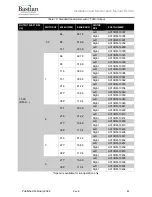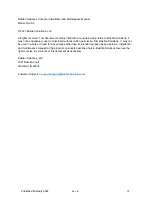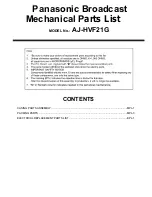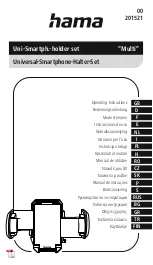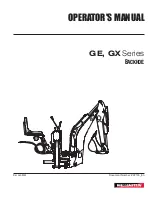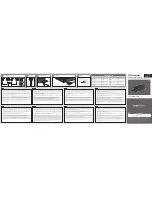
Installation and Maintenance Manual: RLVAC
Published February 2022
61
Belt is difficult to
track.
Check the orientation of the drive
section. This is a common issue if
the drive section is installed
backwards and run in reverse.
Install the drive section in the correct orientation per
the system layout drawings. The tight span of the belt
(at the conveyor’s infeed) should always touch the
drive pulley first.
Too many tracking elements
fighting each other (usually the
result of making too many
changes at once)
Start over with belt tracking. Set everything square,
recheck square/level/straightness of all sections, and
begin again, making single adjustments in small
increments and waiting for the changes to take effect
before proceeding.
Belt splice is not straight
Re-splice belt with a straightness of 1/4” per 10ft or
better
Belt is cut crooked (this is very
rare)
Remove belt from the conveyor, spin it 180°, and re-
install it without making any other changes. If the belt
tracks off to the other direction, the belt is defective.
Contact BSC for replacement information. If the belt
tracks off to the same direction as before, the belt is
not at fault.
Zone has poor
drive or product
hangs up
Insufficient module spring
pressure
Fully tighten module spring bolts for live operation.
Missing pressure rollers or
missing bands
Verify all pressure rollers are present and turn freely
For belt tracking zones, tail zones, and skew zones,
verify the zone is banded together
Speed “surging”
during startup
VFD controlled motor with a
tuning problem
Re-tune the motor in a loaded configuration, or switch
to open loop control if appropriate for your
application. Consult your VFD manual for details.
Acceleration too high for load and
belt length
Use a soft start or VFD for across-the-line motors
(recommended for 3HP or larger). Increase the
acceleration time for VFD-controlled motors.



